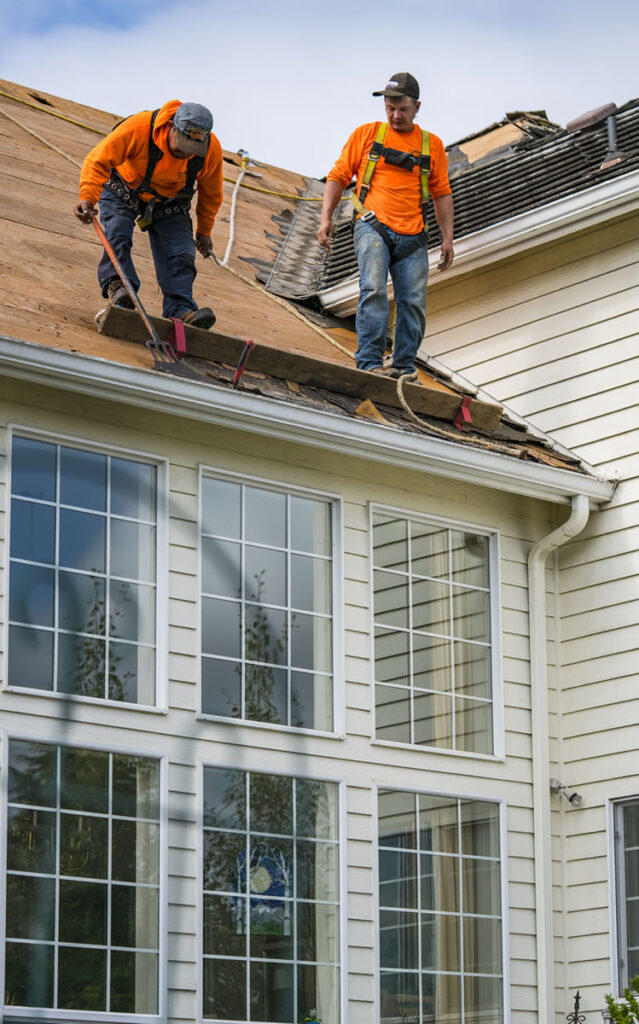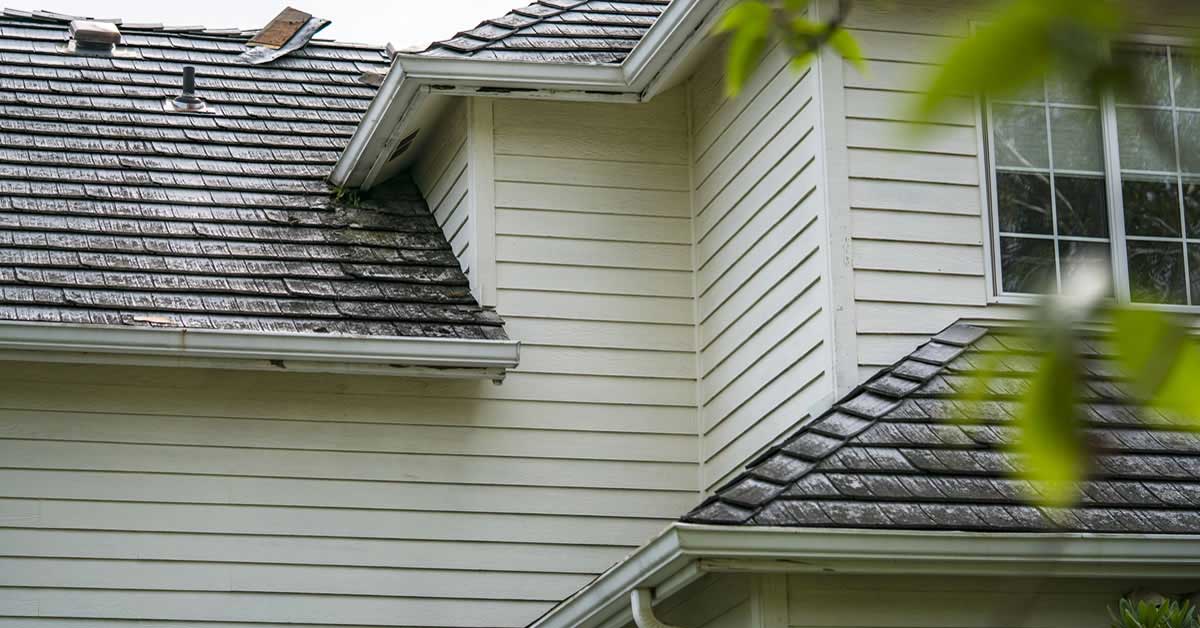The first step to finding out whether you need a new roof is to physically inspect your roof, from both the inside and the outside. Just because you find roof damage, you may not have to do a full roof replacement. You might be able to just do some repairs.
The age of your roof is a big determining factor on whether you need a new roof. A typical asphalt shingle roof will last anywhere from 15 to 25 years before requiring replacement.
Outside Inspection:
- Loss of Granules – Asphalt shingles have a protective mineral granule on the surface. As your roof reaches the end of its lifespan, you can see more granules in your gutters and bare spots on the shingles. Hail can also pit and damage shingles, along with rain, snow, and extreme heat.
- Curling Shingles – Shingles that curl on the edges are a sure sign of an aging roof.
- Shingles Losing Adhesion – The bottom edge of aging shingles can start lifting up during a wind storm due to losing their adhesive grip. Water can then enter through the exposed nail holes.
- Damaged Shingles – If holes, cracks or gaps exist anywhere along the shingles, water can get underneath and expose the interior of the attic.
- Missing Shingles – Heavy storms can blow shingles off a roof. Houses where the shingles have already been weakened or damaged are most susceptible.
- Sagging Areas – If a roof is sagging in one area, it is often caused by damaged roof decking or a broken rafter. In some severe cases, a damaged or sinking foundation can be the underlying cause of the problem.
- Tree Debris on Roof – As rubbish from the tree rots, it becomes acidic causing the roof components underneath to age faster than the rest of the roof.
- Tree Branches Rubbing on Roof – Tree branches damage the shingles and also provide a runway for squirrels and other rodents.
- Damaged Flashing – Flashing around vents, skylights, and chimneys seals the seams of the roof from rain and weather. Look for cracks or breaks that could lead to leaks.
- Moss – Can cause severe damage to the roofing system and shorten the roofs lifespan.

Inside Inspection:
Examine the underside of your roof by going up to your attic. Looking through your attic can also reveal much about the condition of your roof.
- Light Shining Through Roof – Shut off all the lights in your attic and see if sunlight is peeking through. If light can get in, so can rain, cold air, and snow.
- Dark Stain or Dark Streaks – Use a flashlight to look for stains and streaks on the underside of your roof or running down the walls from the base of your roof. If you find any, watch them over a few rainfalls to see if they change shape or size, which indicates an active leak.
- Wood Damage– Check the wood in your attic for signs of water damage – faded wood, sagging wood, cracked or chipped wood can mean water is intruding, which means you have a leak.
- Musty or Mildew Smell – If it has rained recently and your attic has a mildew-like smell, moisture is probably present in your attic due to water seeping in.
Pfeifer Roofing offers a free roof inspection and they can validate any damage you have found and look for other issues you may have missed. They can also make recommendations about repairing or replacing the roof. Repairing a damaged roof early can help prevent further damage and prolong the life of your roof.

